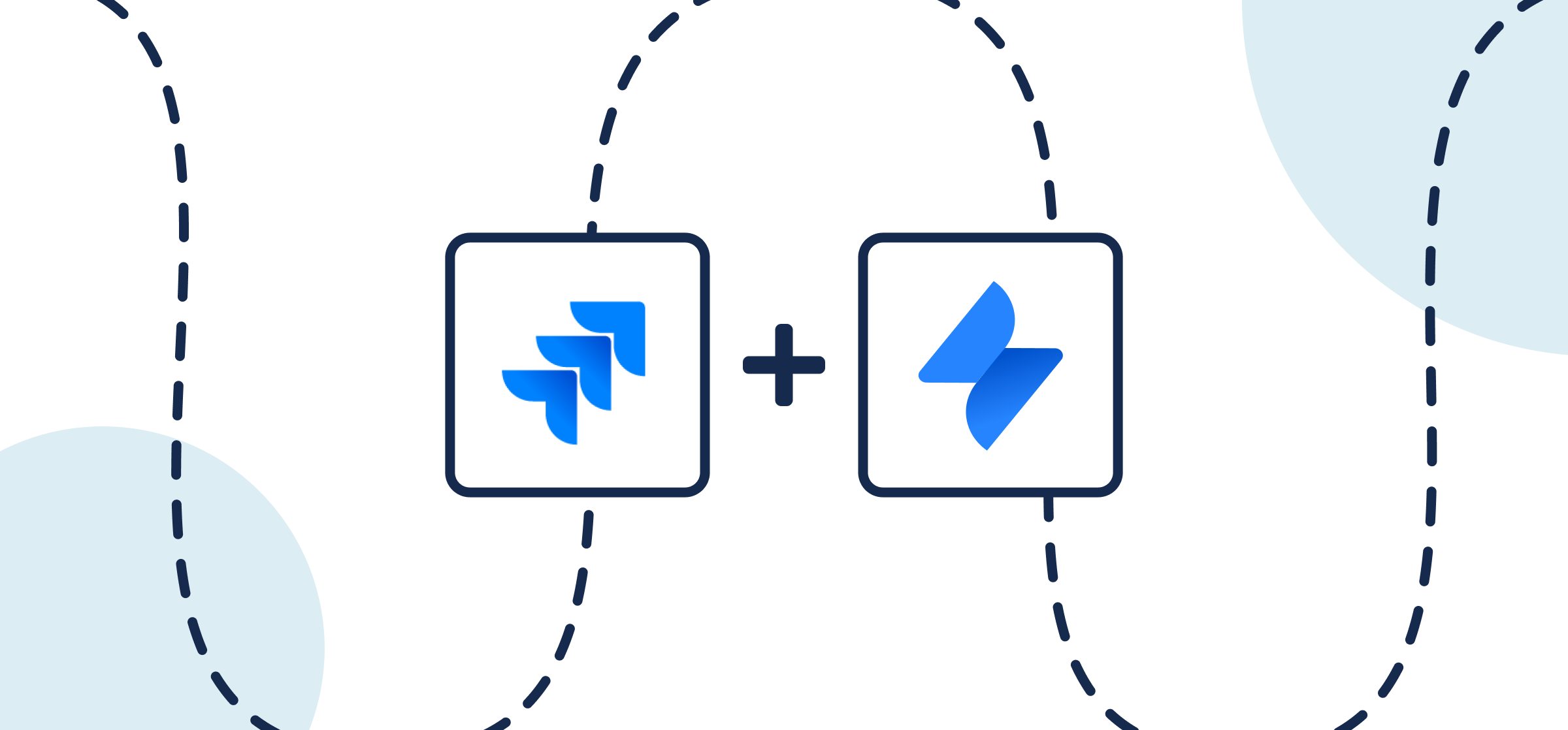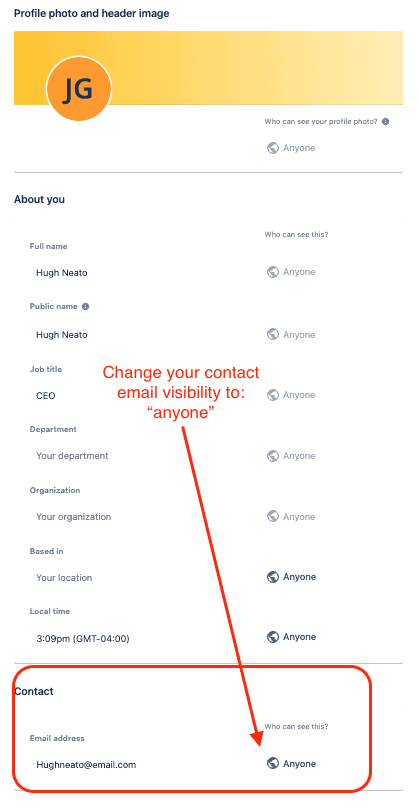How to Sync Tickets between Jira Service Management and Jira Cloud Automatically
These step-by-step instructions will show you how to automatically escalate tickets from Jira Service Management to an escalation queue in Jira with Unito’s 2-way sync platform. It can save valuable time by eliminating manual input for software development teams, engineers, product managers, project management, and anyone else who uses Jira. Every detail of your issues will stay in sync automatically so users on both sides can access the same real-time information without switching tools.
Here is what our completed ticketing escalation queue looks like with issues synced between Jira and Jira Service Management:
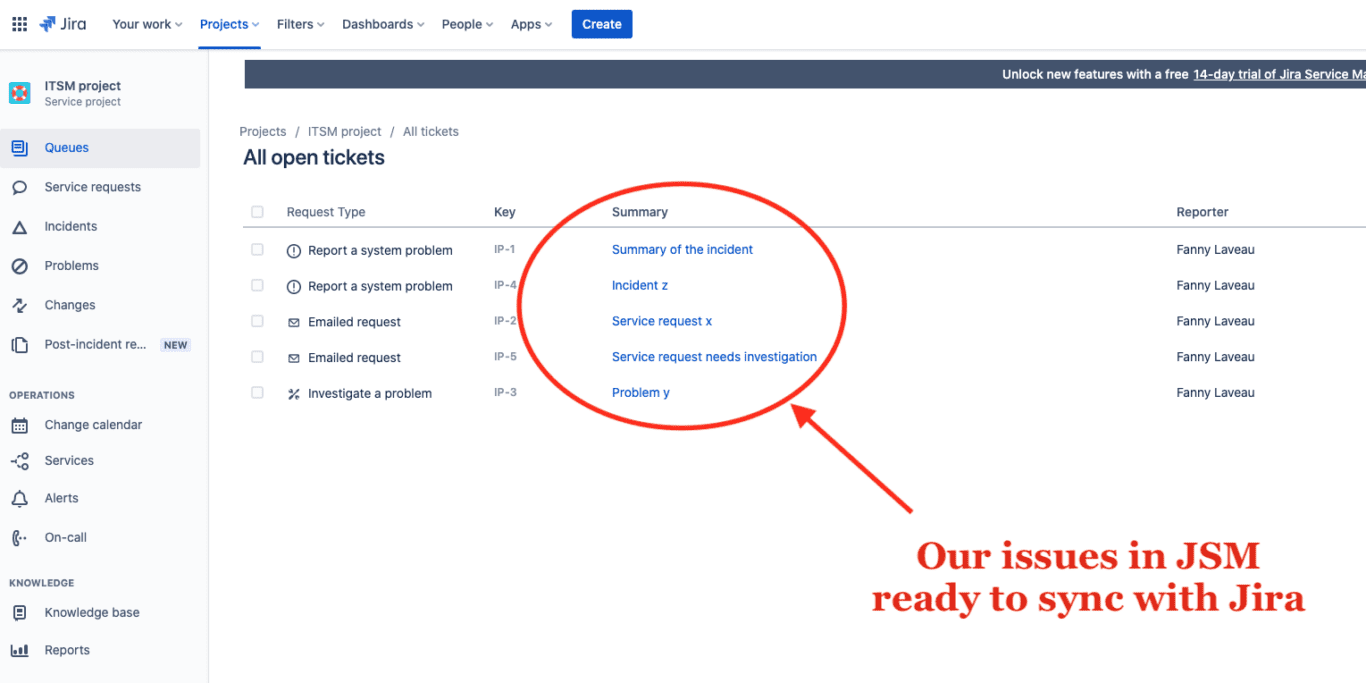

In this guide:
- Tools: Jira and Jira Service Management
- Use cases: Ticket escalation, product management, software development
- Great for: Product managers, IT, customer success, software developers, project management
Jira integration goals:
This integration between Jira Service Management and Jira Cloud has two goals:
- Create new issues in Jira based on tickets in Jira Service Management that have been flagged for escalation.
- Maintain a live ticketing sync between our escalated issues in both tools so that teams can stay up-to-date in real-time.

Why build a ticket escalation queue with Unito?
This integration can align customer support and development teams, share issue status, due dates, descriptions, and other fields between Jira instances for better collaboration. Unito will help you filter Jira issues by label, type, assignee, commenter, reporter, etc.
There are as many use cases for this flow as there are Jira users, since each organization’s workflow is unique to their needs. In this demo, we’ll show you how to integrate Jira and JSM to set up an issue escalation queue, but feel free to adapt this guide to your own needs.
Setup in Jira
If you’re connecting Jira to Unito via OAuth2, then simply follow the on-screen instructions when adding your account for the first time: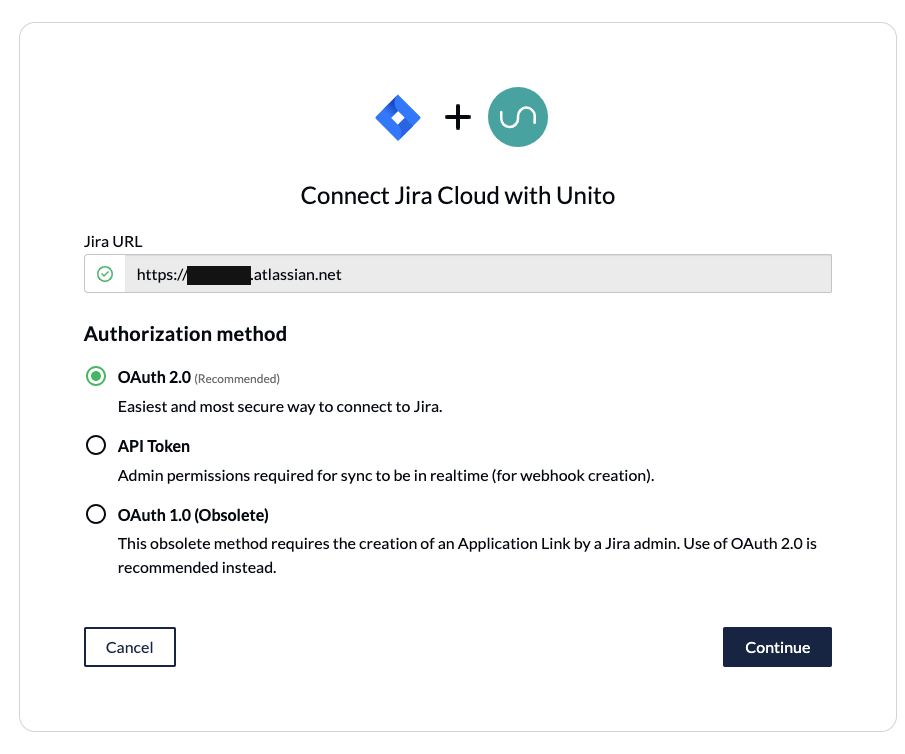
Here’s a separate guide on how to connect a local Jira Server on-premise to Unito. You can also connect your server via ngrok.
Here’s how to configure Jira if you aren’t using OAuth2 (click to expand)
- The Jira account connected to Unito must have administrator access with global permissions.
- Here’s a guide if you need help to configure Jira for Unito access before building your flow. Specifically you’ll need to:
- Set your Jira contact email visibility to anyone from your Jira profile page.
- Then, set up an application link in Jira so that your issues can sync.
Step 1: Connect Jira and Jira Service Management to Unito
- Login the Unito App and click + Create Flow.
- Next, click Start Here to connect your tools.
- Select +Add a tool to this flow in either column, then +Choose account to specify the Jira project you plan on syncing. The order in which you connect your tools doesn’t matter.
- Click Confirm.
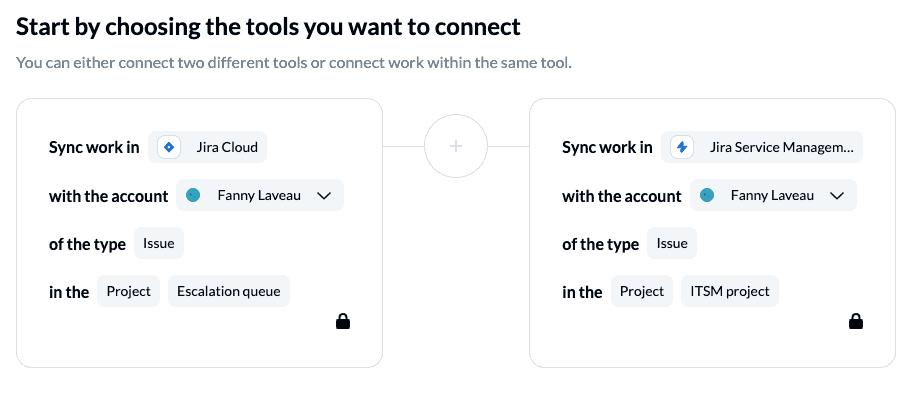
Note: Since we’re automating the issue escalation process, make sure you select the Jira Cloud project that hosts all the issues you’d like to sync to Jira Service Management. If you have more than one project to sync with JSM, you can duplicate this flow afterwards.
Step 2. Choose a flow direction for creating new issues or tasks
- Click on the arrow that points to your Escalation queue project. This will create new issues in Jira for the development team based on certain actions taken in JSM, which we’ll explain in the next step.
- Click Confirm.
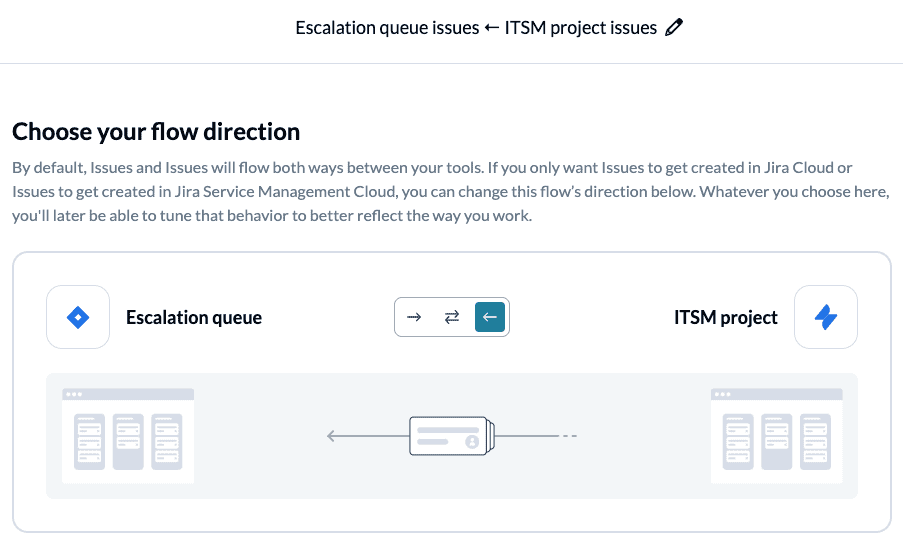
Step 3. Add conditions to filter out unrelated data from your flow
By default, Unito will sync all newly created issues once you launch your flow. You can sync historical data (issues created prior to launching your flow) by removing the creation date filter from your rules.
- Select Add a new rule and search the list for the label you created for issue escalation. In our case, we selected the “escalating” label.
- Select Confirm.
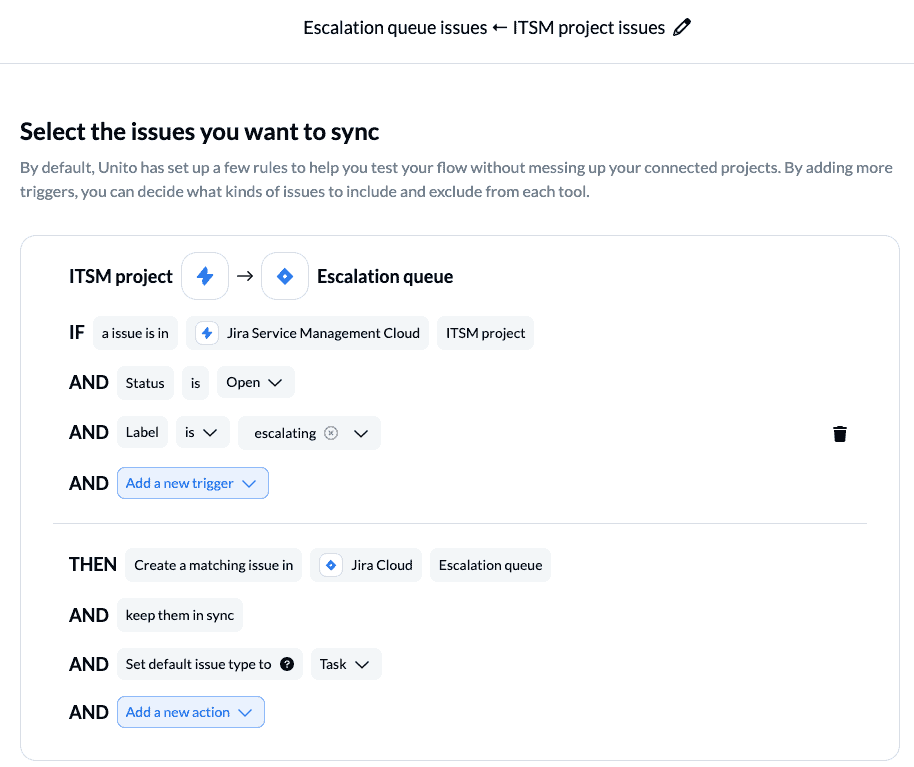
This is a basic set of rules that sends specific issues from Jira Service Management to Jira. When you’re more comfortable building flows, you can create a more advanced set of rules to better suit your needs.
Learn more about building rules here.
Step 4: Link fields between Jira Service Management and Jira
When you open this screen, you can choose to set up your field mappings manually, or have Unito auto map them first. Auto-mapping is great if you like the idea of starting from a template, while manual mapping is better for those who prefer a DIY approach.
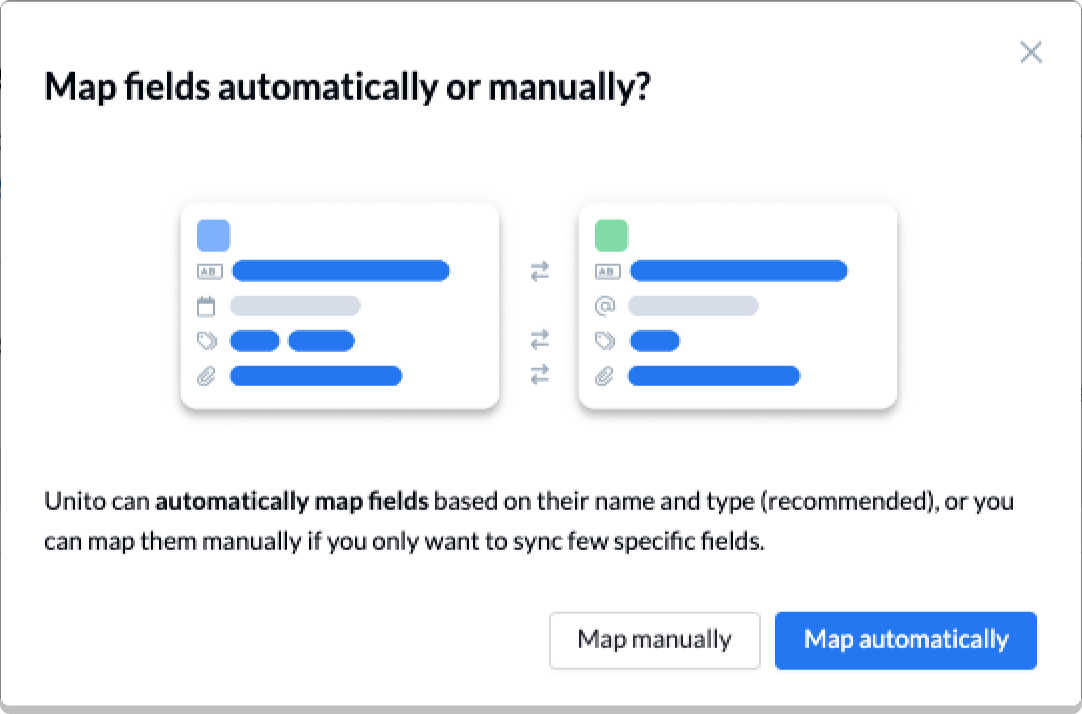
Below you’ll see our completed field mappings so that you can try to build something similar.
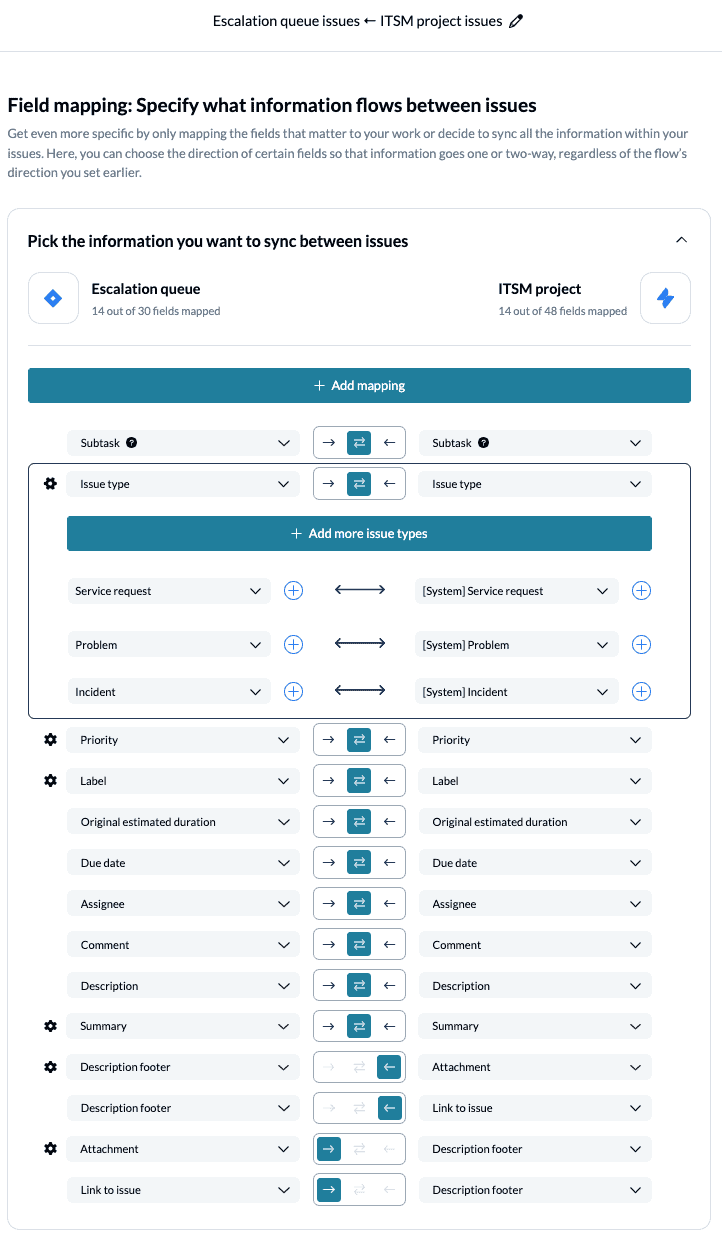
As you can see, all our field mappings are intuitive: comments map to comments, tags to tags, description to description and so on.
Field configuration options
If you see a gear (or cog) icon beside a field, that means you can modify specific values within that field for additional customization. These are all based on your own custom fields, labels, titles etc.
Note: If you don’t configure your fields as pictured, then your flow will refer to your default rules when syncing.
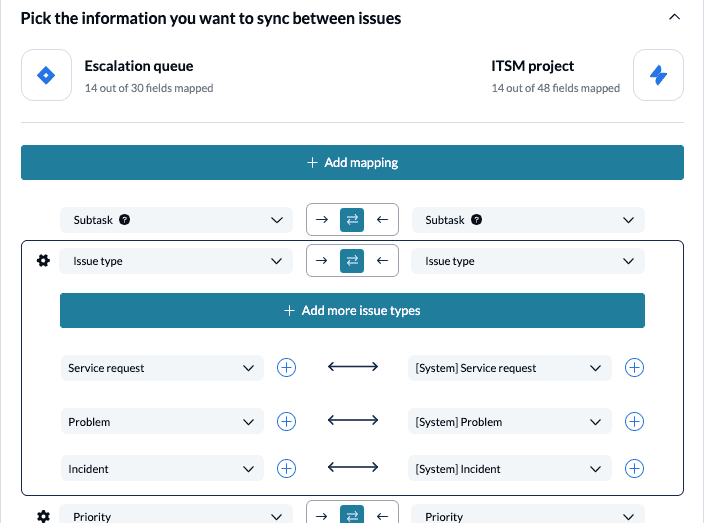
You can learn more about field mappings here.
Click Confirm.
Step 5: Launch your Jira to Jira Service Management Integration
And that’s it! Just like that, you’ve built a flow to automate the issue escalation process from Jira Service Management to Jira Cloud.
If you’ve followed the steps above, your flow will now:
- Create a new Jira issue for your dev team every time the team in JSM labels an issue with “escalation” or a similar tag.
- Keep those issues in a two-way real-time sync.
Now how do you make sure you can do this across more than just one project?
Ready to streamline development work?
Meet with our team to see what Unito can do for your workflows.
What’s next after you sync Jira and JSM with Unito?
Duplicate your flow
Unito’s flow duplication feature lets you copy existing flows, keeping your rules, mappings, and many other settings intact. This allows you to sync multiple Jira projects or epics to a master without starting each flow from scratch.
If you’d like to browse through more of our Jira articles before you start automating, you can check out our beginner’s guide to Jira, this overview of Jira for project managers, or version control 101.
- Read a case study from a Unito user who did just that.
- Learn how to sync Trello cards between multiple boards with Unito.
- Or follow a similar guide to:
- Sync Jira to Notion
- Sync Jira with Asana
- Link Jira issues with Trello cards
- Connect Jira projects to Wrike
- Sync tasks between Jira and monday.com
- Sync jira issues between multiple projects
- Connect Jira and HubSpot
- Link Jira to Azure DevOps
- Merge issues between Jira and GitHub
- Sync Jira issues to Airtable
- Link tasks between Jira and ClickUp
- Send Jira issues to an Excel spreadsheet
- Export Jira to Google Sheets
- Connect Jira Service Management to ServiceNow
- Send tickets from Zendesk to Jira
- Connect Jira to Smartsheet
- Sync Jira and Salesforce
- Here’s a guide to integrate GitLab and Jira with Unito.

